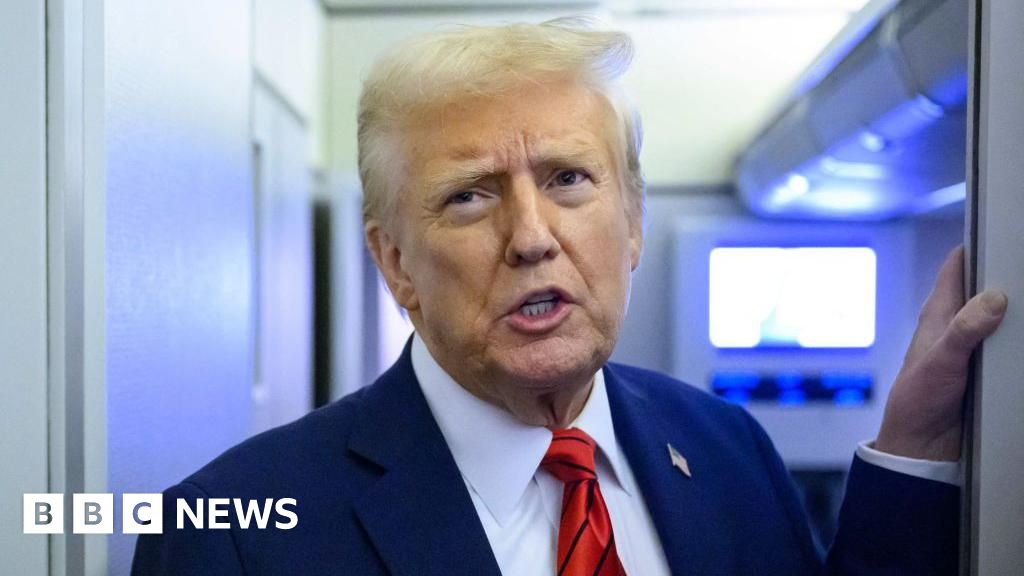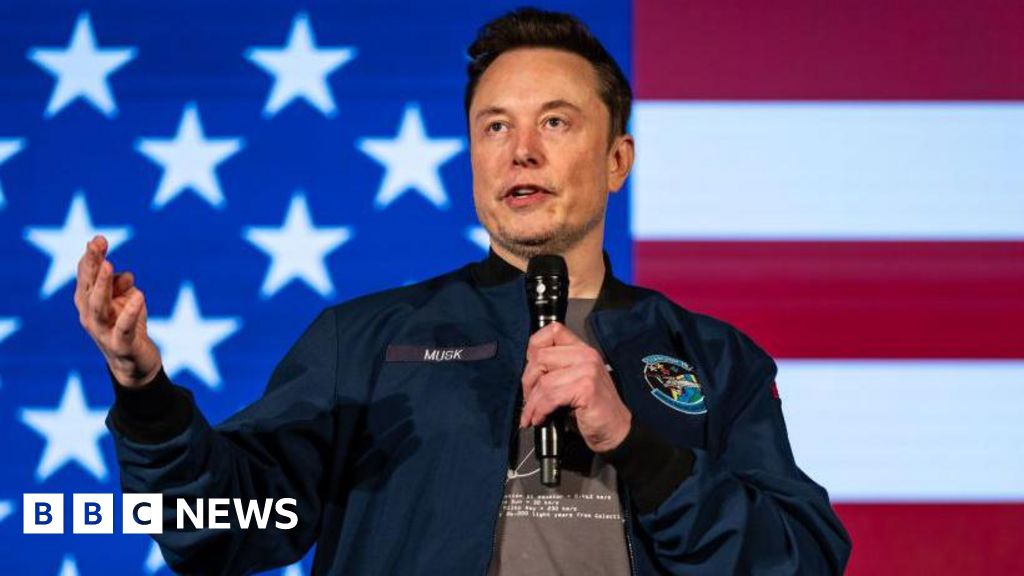Politics and convenience drive Mexico to be US’s top trading partner | Business and Economy News
Before Elon Musk announced that he would pour billions into building his largest Tesla plant in the industrial outpost of Monterrey, Mexico, United States trade winds were already shifting south.
In late 2022, Mexico’s Economy Minister Raquel Buenrostro Sánchez said that 400 companies had expressed interest in relocating from Asia to Mexico. New industrial parks were popping up, many driven by Asian money, and the investments were raining down. By June 2023, some $13bn in investments had been secured, according to Mexico’s secretary of finance and public credit, most for auto or auto parts manufacturers.
New numbers from the US Census last week indicate that Mexico is the US’s top trading partner. In 2023, the US traded $798bn with Mexico as the goods it bought from its southern neighbour surged past China and Canada. The boom around nearshoring – a catchy term that describes the movement of companies closer to their preferred market, in this case, the US – has helped drive Mexico into this position.
“This is not cyclical, this is new,” said Andrew Hupert, a trade expert who has lived in China, and now lives in Mexico.
“What I’m seeing is a diversification of manufacturing. The calls started coming from companies saying, ‘I don’t want all my eggs in one basket’,” said Joshua Rubin, the vice president of business development with the Javid Group, a Nogales, Arizona-based company which helps companies start operations in Mexico.
According to the Federal Reserve Bank of Dallas, Mexico first edged out Canada at the start of 2023, with bilateral trade between the neighbours totalling $263bn in the first four months, as China’s numbers continued their descent. By the end of the year, the US had bought $475bn worth of Mexican goods, compared with $421bn from Canada and $427bn from China, which saw its number drop by 20 percent from 2022.
The nearshoring boom is not exclusive to Mexico. A report in 2022 by the Inter-American Development Bank (IDB) suggested that all of Latin America and the Caribbean was poised to reap the benefits, with as much as $78bn in exports in the near future. Countries such as Argentina, Brazil and Colombia stood to make sizeable gains. But they were all dwarfed by Mexico, which accounted for nearly half of the IDB’s forecast nearshoring growth. It has caught the attention of the Canadian auto parts lobby, which has started to express concern that Chinese investments in Mexico will end up undercutting Canadian jobs.
How Mexico got into this position is as much a result of its own initiatives and growth as it is geopolitical forces outside of its control. And experts suggest it is just beginning.
“It’s a world of opportunities now,” said Marco Villarreal, who helped Hisun Motors, a Chinese-based manufacturer of ATVs and UTVs, open up manufacturing facilities in Saltillo, a city on the outskirts of Monterrey.
Villarreal, who had long careers at General Motors and Caterpillar, recalled a tour of industrial parks in the Monterrey-Saltillo region in late 2020, and the head of Hisun’s US operations expressing surprise at the extent of the manufacturing muscle before him.
“Marco, what’s happening in Mexico is what happened in China 30 or 40 years ago when we started a manufacturing expansion,” Villarreal recalled the owner telling him.
“There is a growing interest from Asia to set up a footprint in Mexico,” agreed Alfredo Nolasco, a business development specialist who founded the Mexican consultancy Spyral.
What explains the boom?
Mexico has long carved out a space as a manufacturing hub for the US, through tariff and duty-free programmes that have enabled companies to set up so-called “maquiladoras” – as the factories were dubbed in the 1990s – to assemble products exclusively for export. The North American Free Trade Agreement, and its revamped cousin known as the United States Mexico Canada Agreement, was another boon for the southern partner.
But a confluence of new factors has converged to create the surge we are seeing today. The one most often highlighted by experts on both sides of the Mexico-US border is the trade war between China and the United States. It began under the administration of former US President Donald Trump and has really taken off under President Joe Biden, said Hupert.
Hupert has been warning of the dwindling gains in China for years, arguing that compliance costs were going to outweigh savings.
“To comply with Chinese regulations and US regulations at the same time is more or less impossible,” said Hupert. “The United States in many industries is asking for information that the Chinese could at any time deem to be state secrets.”
Then there was the COVID-19 pandemic, which exposed a logistical risk which had never really been considered by a globalised economy. Companies were forced to swallow tough supply chain pills as the cost to get containers of goods to North America from China skyrocketed. It killed businesses that were unable to get their products to their markets or moved Mexico into an indispensable position, as was the case for medical supplies going into the US during lockdowns.
All this said, it is not that companies are abandoning China or neighbouring countries altogether, said Hupert, but setting up branches or expanding their Mexico footprint.
“The pandemic left us a very important lesson that took us from the globalisation of production to the regionalisation of production,” said Claudia Esteves, the director general of the Mexican Association of Private Industrial Parks. “It’s practically killing globalisation.”
The war in Ukraine has been an additional factor that caused European interests to reconsider their manufacturing outposts in places like Poland, she added.
“Our good luck is due to our geographic position,” she said. “It’s because we share a 2,000-mile [3,218km] border with the biggest market in the world.”
As a result, the demand for industrial parks has also exploded. Some 50 new industrial parks were under construction in Mexico in 2023 – almost half by Chinese investors, and another 20 percent that are Korean, said Esteves. In 2019, there were 2 million square meters (21.5 million sq ft) of occupied industrial park space. By mid-2023, that jumped to 4.3 million square meters (46 million sq ft). “That’s historic,” she said.
Growth that has been ramping up for decades
While this nearshoring boom is largely around manufacturing, the growth of trade is broader than that.

Jamie Chamberlain, the chairman of the Greater Nogales Santa Cruz County Port Authority, sees it as part of a trajectory dating back decades. He recalls going to rural farms in Mexico as a child with his parents, who started importing fruits and vegetables in 1971.
In the agricultural sector, the growth has been “astronomical” – when he started in the business in 1987, the import of produce was a business that spanned November to May. “Now, we’re pretty much a year-round industry that imports from every single state in the country of Mexico,” he said. “The berry sector is the largest growth sector and all for export to the United States.”
It is not just demand that has greased this economic wheel. There is forward-thinking involved. In Nogales, for example, the Port Authority started planning to expand its port of entry to manage the increasing flow of trucks when there were 900 to 1,000 crossing into the US every day. Now it is about twice that, in each direction.
“The preparation in infrastructure is so important,” he said.
Cartels and currency
Hupert identifies two potential clouds in this upward trajectory – the instability caused by drug cartels and the currency. “The peso is just too damn strong,” he said. “That and inflation wipes out Mexico’s cost advantage.”
It is not just a cost advantage but a labour supply advantage, said Villarreal. The US does not have the skilled labour many US companies are clamouring for and which Mexico has spent decades developing. It now has more than 50 years of automobile manufacturing under its belt, which means it has a workforce that can take on technical assemblage and is more than qualified for less demanding roles, such as furniture, he noted.
And where gaps do exist, the market forces are already working to fill them. Nolasco, the business development specialist, recalled one client who came to him looking for suppliers for nuts, bolts and washers.
“Even though Mexico is a powerhouse, we realised that for those kinds of simple issues, there weren’t enough,” he said. As demand grows, that labour supply issue may be solved.
“That’s a large opportunity there to develop joint ventures with Mexico and other partners around the world.”
Check out our Latest News and Follow us at Facebook
Original Source







